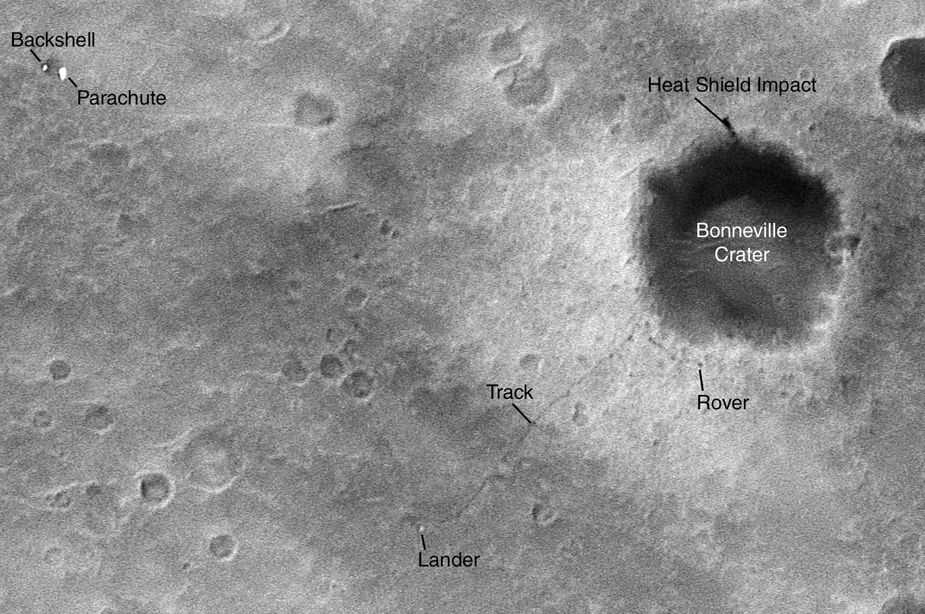Remote Roving: Mars Researchers Work from Home in Extended Mission

The researchers and engineers behind NASA's double rover mission to Mars have been given a reprieve of sorts, the chance to work from home during the next six months of their extended expedition.
With the Spirit and Opportunity rovers slowly putting the Martian winter behind them, about two-thirds of the mission's research and operations staff have left NASA's Jet Propulsion Laboratory (JPL) for their home universities and research centers.
The research team, spread across the U.S. and Europe, is relying on modern telecommunications technology and the streamlined rover control operations that they have perfected throughout the last nine months roving about Mars.
"It doesn't really change things on Mars," said Steve Squyres, the principal investigator for the rover mission who now leads his team from his Cornell University office in Ithaca, New York. "Where it changes is here on Earth, and we can now go home and start spending time with our families."
Instead of having 60 to 80 mission scientists on call at JPL, only about a dozen are now present at any given time, Squyres told SPACE.com.
Regular telephone and video conferences keep researchers and engineers up to date and on task, while the steady development of even more automated rover operations has slashed the amount of time needed to tell Spirit and Opportunity how to explore the red planet.
"I think we're benefiting from the fact that we did so many sols of operations here, where the team learned the process very well and learned how each other worked," said John Callas, rover science manager at JPL, adding that teleconferences began in the early days of the mission. One sol is a Martian day, which is slightly longer than one day on Earth.
Get the Space.com Newsletter
Breaking space news, the latest updates on rocket launches, skywatching events and more!
Creating a database of rover motion templates - such as a standard direction to create a 360-degree panoramic camera image - has helped save more time during rover maneuvers, he added.
"We have become the best in the world at something no one else does," Squyres said of controlling the Mars rovers.
Remote operations
Over the last few months, rover mission controllers have been gradually laying the communications foundation to allow a complete shift toward remote rover operations. By the end of September, they were able to make that final move.
Callas said the shift has actually allowed more rover researchers to tune into the mission, either by calling into to special toll-free phone numbers and using webcams to broadcast images.
"When they're not involved in a particular operation, they can still dial into a meeting that they would otherwise have had to get on an airplane and fly to JPL for," Callas told SPACE.com. "They could be in Starbucks and listening in."
Some nice breaks, including a Martian winter less harsh than expected and a slower accumulation of dust on rover solar panels, are encouraging signs that Spirit and Opportunity have a long mission ahead of them, he added.
But Mars researchers were still careful to point out that their rovers have more than outlived their minimum mission parameters. Spirit has shown some signs of age and both rovers have had their share of glitches during their time on Mars.
"We've got to try to squeeze the most out of every single sol," Squyres said, adding that Spirit and Opportunity are dirty and scratched, but the rovers wouldn't have it any other way. "Whenever they do die, there will still be something to do...I've finally come to terms with that."
"It will be a sad day," Callas added. "There's still a lot of adventure to go around."
Join our Space Forums to keep talking space on the latest missions, night sky and more! And if you have a news tip, correction or comment, let us know at: community@space.com.

Tariq is the Editor-in-Chief of Space.com and joined the team in 2001, first as an intern and staff writer, and later as an editor. He covers human spaceflight, exploration and space science, as well as skywatching and entertainment. He became Space.com's Managing Editor in 2009 and Editor-in-Chief in 2019. Before joining Space.com, Tariq was a staff reporter for The Los Angeles Times covering education and city beats in La Habra, Fullerton and Huntington Beach. In October 2022, Tariq received the Harry Kolcum Award for excellence in space reporting from the National Space Club Florida Committee. He is also an Eagle Scout (yes, he has the Space Exploration merit badge) and went to Space Camp four times as a kid and a fifth time as an adult. He has journalism degrees from the University of Southern California and New York University. You can find Tariq at Space.com and as the co-host to the This Week In Space podcast with space historian Rod Pyle on the TWiT network. To see his latest project, you can follow Tariq on Twitter @tariqjmalik.









